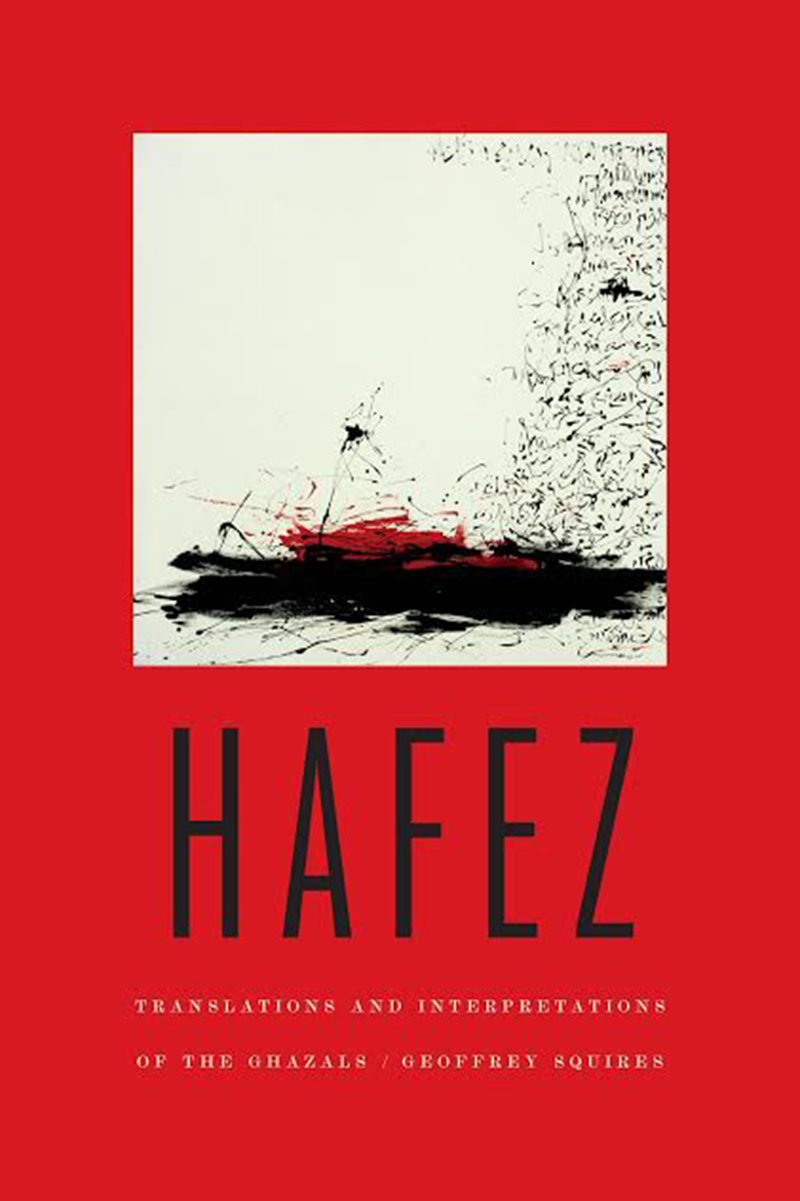Hafez
Among modern day Iranians (i.e. Persians) the world-over, the poet Hafez (1315/17-1389/90) remains a household name. His “Divan” (Persian for “Collected Poems”) is found in nearly every household. Every Persian New Year, it is brought out, opened at random, and read from as a means of divination “interpreting what is found there” for what’s to come the following year. Hafez composed the majority of his work in the verse form known as the ghazal, an “Arabic word meaning short love lyric, the form developed most fully in Persian poetry, where it diversified to encompass a range of themes and tones.” There is no set length to a ghazal, but on average they are seven couplets. Every couplet is called a “beyt.” In the original Persian language Farsi, the ghazal appears as two columns of lines running parallel down the page. The beyt is comprised of each pair of parallel lines running down the columns.
Geoffrey Squires is an Irish poet who spent significant time in Iran as a young man in the 1960s when he first became familiar with Hafez and made some initial attempts at translating from the Divan. He ultimately tackles 248 ghazals out of a Divan total of nearly 500. Squires divvies up the ghazals under 10 section headings: Love, The Garden, The Tavern, The Lover, The Age, The Beloved, The Faith, The Mystic, The Moralist, and The Poet. Inventive with his translation, Squires allows himself leniency to approximate and transform the traditional ghazal into an updated, Westernized form, at times staggering stanzas on the page, “varying the left hand margin to mark internal shifts and breaks” and approaching rhyme on his own terms:
I have made considerable use of assonance and internal rhyme to echo the aurality of Hafez. I have used end rhymes on occasion, usually near or at the end of the poems, but more sparingly, since I think they can sound too obvious.
He also notes his use of “the contrast between long and short lines to create some of the momentum” he finds in the original, as well as leaning “towards the formal rather than colloquial in terms of diction” and “a small number of archaisms in order to distance the writing from the present.”
In another somewhat controversial move, he doesn’t always offer translation of the full ghazal, or places halves of the same ghazal pages apart under separate category headings. While no doubt frustrating purists and somewhat inhibiting the desire of those seeking as complete an immersion into Hafez as wholly as possible, this yet proves an inventive tweaking of translator’s prerogative. But for many traditionalists of poetry and/or translation, these practices may be a step too far, even if Squires does stick to using a regular meter. He explains the reason behind the decisions he’s taken: “I am trying to create not simply a collection of ghazals, but a text that forms a whole.”
The ideal format for any poetry translation always includes the original text on facing pages. With a book this size, that no doubt significantly raises publication cost. And of course few Farsi readers are without one or more editions of Hafez readily at hand. Yet given the idiosyncratic nature of the presentation Squires offers, it would be quite helpful and interesting to have the original immediately at hand.
While Squires identifies where to find the original, he usually references just one previous edition of the Divan among what are, as Squires himself notes, dozens of varying editions:
Hafez’ work was not fully collected until after his death and although there are now several well-established editions, textual variants and problems are legion: one estimate is that 80% of the ghazals have at least five variants in terms of number or order of lines, let alone words.
An interesting assertion in regards to Squires’s approach to these multiple versions, at times with beyts in alternating order and/or missing entirely from one ghazal to the next, is the possibility of it being an intentional sign indicating that individual beyts may be thought to function as isolated units. Thus beyts may be shuffled at will or left out to best achieve the desired impact.
This idea resonates with Ted Berrigan’s debut poetry collection from 1964, The Sonnets. As his wife the poet Alice Notley observes in her introduction to the recent Penguin re-issue:
The Sonnets is composed of moveable parts, each of which seems to stand for a piece of experience or autobiography, or a knowledge or an opacity, a verbal riddle worth contemplating. Lines and phrases are peculiarly factual entities.
In another echo of Berrigan, Squires remarks: “The poetry is highly stylized. It presents a persona rather than a person.” Hafez as a named figure in the poems is, much like Berrigan, always just another character of the poem’s creation. Each is and is not the poet himself. Without doubt, Squires brings Hafez into our contemporary era.





